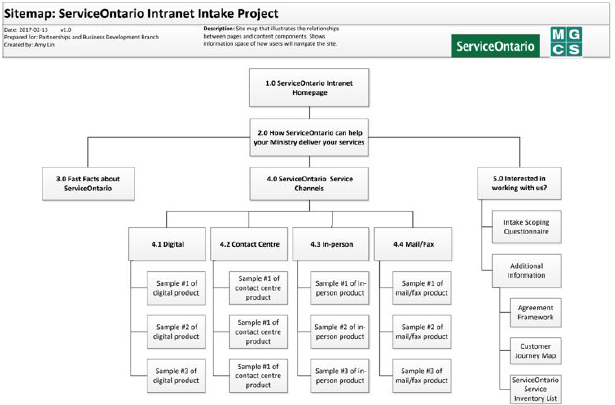Breaking the silos: Creating an excellent omni-channel partner intake experience
Creating an Excellent Omni-channel Partner Intake Experience
This project started as my pet-project to improve the client experience within my Branch. However based on the valuable user insights I gained from ux research, this project evolved into a 6 month service design project that involved the whole ministry to collaborate and create a consistent and clear on boarding process for new business partners.
TEAMMATES
Business Analyst
Intake Business Consultants
Ministry Partners
DEFINING THE PROBLEM
The Business Challenge
ServiceOntario handles over 35 million transactions every year, including health card applications, drivers licence and vehicle licence plates.
However, due to service gaps, the current intake journey for interested ministries to partner with ServiceOntario is inconsistent, unclear and confusing.
Problem Definition
The current intake process is unclear to ministry clients
Information gaps exist in the drafting process for Memorandum of Understanding and Service Level Agreements
Ministry clients are unclear how ServiceOntario can help their ministry meet their program goals
Information is provided to interested ministry clients only through phone and e-mail requests
My Role
I led the service design work, producing all major UX design deliverables and presenting solutions to gain senior management buy-in. I worked closely alongside with past partners of ServiceOntario to define gaps in the service, focused on content design and prototyped digital solutions together. I was thrilled by the opportunity to create something meaningful that involved different levels of the organization.
EMPATHIZING WITH USERS
How good is our understanding of our customers?
User Interviews
Instead of developing a simple standardized intake template, I delved deeper to better understand the root of the problem by speaking with past partners. Through understanding the users in-depth, I realized that there were many gaps in services in the current business process that created a poor onboarding experience for partners. Asking around my colleagues who did the intake process with partners, I quickly realized that we have never went back to partners to get a sense of how we were doing well, or what we weren’t to improve our services.
I decided to conduct 30min one-on-one interviews with past business partners that were in-person. I sampled users with diverse motivations and backgrounds who reached out to ServiceOntario as an interested business partner.
I was interested in learning about the users overall experience and onboarding process working with ServiceOntario as a partner. To consolidate the different end users I heard from, I created Personas that provided valuable insights to my design team that captured the core themes.
IDEATING
Mapping the mental mode of users
Information Architecture
Based on user insights, I identified information gaps and developed an information hierarchy that address the 3 buckets of high-value information most requested by clients:
What - What is ServiceOntario? What services do you offer?
Why - Why is SerivceOntario your first choice as a partner?
How - How you can reach out to us
EARLY VALIDATION
Rapid prototyping user-centric ideas
I tested a website idea as a one window platform that provides consistent and accurate information to access the spectrum of business services offered by ServiceOntario. This solution would help partners easily navigate and access documents related to the partnership process. Co-designing with past partners, we explicitly mapped out the major components of the partnership journey which was previously unclear.
I started off with sketches on paper, then digitized the wireframes on InVision so it could be easily shared amongst users for feedback.
Testing ideas with customers and stakeholders
User Testing
I recruited a new batch of users to test the website prototype using InVision. Users were given specific tasks. Early validation allowed me to revisit the content design of the website to make it more accessible, inclusive and mindfully removed any internal jargon.
This part of the process took a couple weeks because we were finding how to present content better to users. We made lots of tweaks to the design.
Top insights:
The website contained too much text upfront and was overwhelming
The term "channel" is confusing; the term "service" is more clear
No business contact for general inquiries
OUTCOMES
Gaining Executive Buy-in
As a lead on the project, I brought my service design project to ServiceOntario's management board and had the opportunity to present my business solution to directors and senior executives. I used storytelling techniques, prototypes and visuals to explain main design decisions to a non-designer audience. By sharing the research methodology and the rationale behind the design process, I was able to build trust through transparency with the leaders of my organization.
My pitch was successful - I received the buy-in from all 20 ServiceOntario Executive members to gain organizational resources to implement the digital solution with a user-centric partnership intake user experience.
“The executive committee have discussed and approved the new approach to the refreshed client intake process. We recognize the value for strong integration (e.g. client hand-off points) and delivering customer-centric service to clients.”





